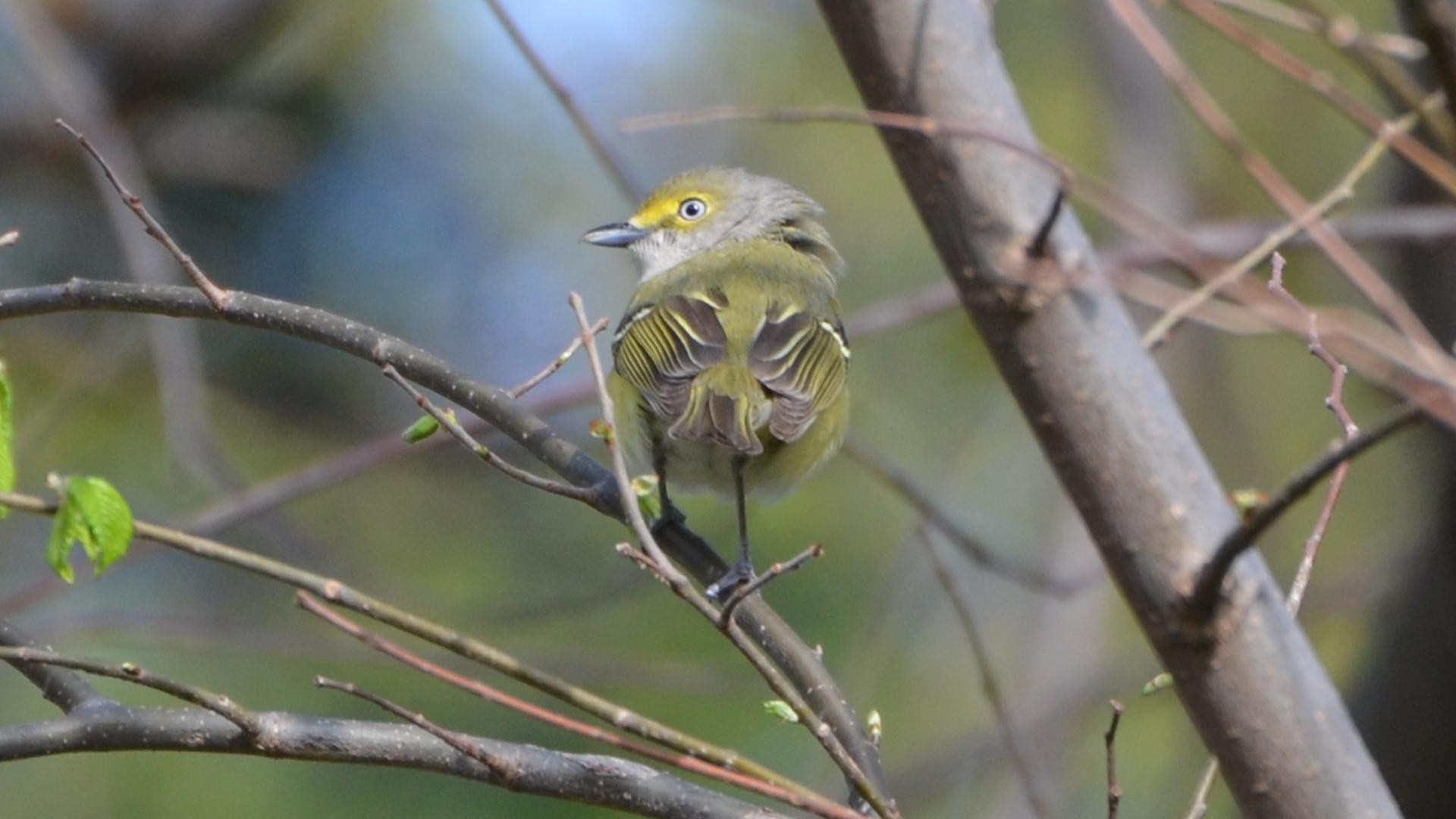White-eyed Vireo
A species of Vireos, Also known as Chick-of-the-village Scientific name : Vireo griseus Genus : Vireos
White-eyed Vireo, A species of Vireos
Also known as:
Chick-of-the-village
Botanical name: Vireo griseus
Genus: Vireos
Content
Description General Info
 Photo By Andy Reago & Chrissy McClarren , used under CC-BY-2.0 /Cropped and compressed from original
Photo By Andy Reago & Chrissy McClarren , used under CC-BY-2.0 /Cropped and compressed from original Description
The white-eyed vireo (Vireo griseus) is a small songbird. It breeds in the southeastern United States from New Jersey west to northern Missouri and south to Texas and Florida, and also in eastern Mexico, northern Central America, Cuba and the Bahamas. Populations on the US Gulf coast and further south are resident, but most North American birds migrate south in winter. This vireo frequents bushes and shrubs in abandoned cultivation or overgrown pastures. The grass-lined nest is a neat cup shape, attached to a fork in a tree branch by spider webs. It lays 3–5 dark-spotted white eggs. Both the male and female incubate the eggs for 12–16 days. The young leave the nest 9–11 days after hatching. Measurements: Length: 4.3-5.1 in (11-13 cm) Weight: 0.3-0.5 oz (10-14 g) Wingspan: 6.7 in (17 cm) Its head and back are a greyish olive, and the underparts are white with yellow flanks. The wings and tail are dark, and there are two white wing bars on each wing. The eyes have white irises, and are surrounded by yellow spectacles. Sexes are similar. The white-eyed vireo's song is a variable and rapid six to seven note phrase, starting and ending with a sharp chick. During the breeding season, the diet of this species consists almost exclusively of insects, primarily caterpillars. In the autumn and winter it supplements its diet of insects with berries. 
Size
13 cm (5 in)
Colors
Black
Green
Yellow
Bronze
Gray
White
Life Expectancy
8 years
Nest Placement
Shrub
Clutch Size
3 - 5 eggs
Incubation Period
1 - 2 broods
Number of Broods
13 - 15 days
Nestling Period
9 - 11 days
Feeding Habits
White-eyed Vireo predominantly consumes insects like caterpillars, flies, beetles, and spiders, hunting in a deliberate, observant manner. It secures larger prey with its foot. In nonbreeding season, white-eyed Vireo adds fruits from plants such as sumac and dogwood to its diet.
Habitat
White-eyed Vireo typically inhabits areas where dense shrubbery is abundant, including wood edges, brambles, and thick undergrowth. They thrive in a range of semi-open landscapes: from overgrown fields and forested borders to streamside thickets and second-growth woodlands. While white-eyed Vireo can be found at various altitudes, they are especially common in lowland areas with mild climates. In regions like Florida, white-eyed Vireo also adapts to coastal environments, utilizing mangrove swamps as part of their habitat.
Nest Behavior
White-eyed Vireo's nesting involves both sexes constructing the nest over 3-5 days.
Nest Characteristics
White-eyed Vireo's nest is pendulous, built in a Y-shaped fork of a shrub 2-6 feet high. Materials include insect silk, spiderweb, leaves, bark, plant fibers, rootlets, paper, and camouflage of lichens or moss. It's lined with fine grass or hair.
Dite type
Insectivorous
General Info
Feeding Habits
Bird food type
Bird Feeder Type

Small Tube Feeder

Platform
Sounds
Song
Recording location: Panama
Song
Recording location: United States
Song
Recording location: United States
Behavior
White-eyed Vireo demonstrate remarkable agility, navigating their environment with hops and short flights among dense foliage to stay concealed. They exhibit a distinct commitment to communication, as males energetically vocalize throughout the day, defying the midday lull typical of many other birds. Territories are zealously guarded through a series of visual displays, utilizing fluffed or sleek feathers and pecking motions to deter rivals. In breeding season, white-eyed Vireo engage in devoted monogamy, often returning annually to familiar breeding grounds, yet not necessarily reuniting with past mates. Both sexes invest in offspring care, sharing incubation duties and feeding their young, though their nesting success can be compromised by the parasitic tendencies of the Brown-headed Cowbird.
Species Status
Not globally threatened.

 Photo By Andy Reago & Chrissy McClarren , used under CC-BY-2.0 /Cropped and compressed from original
Photo By Andy Reago & Chrissy McClarren , used under CC-BY-2.0 /Cropped and compressed from original Scientific Classification
Phylum
Chordates Class
Birds Order
Perching birds Family
Vireos Genus
Vireos Species
White-eyed Vireo